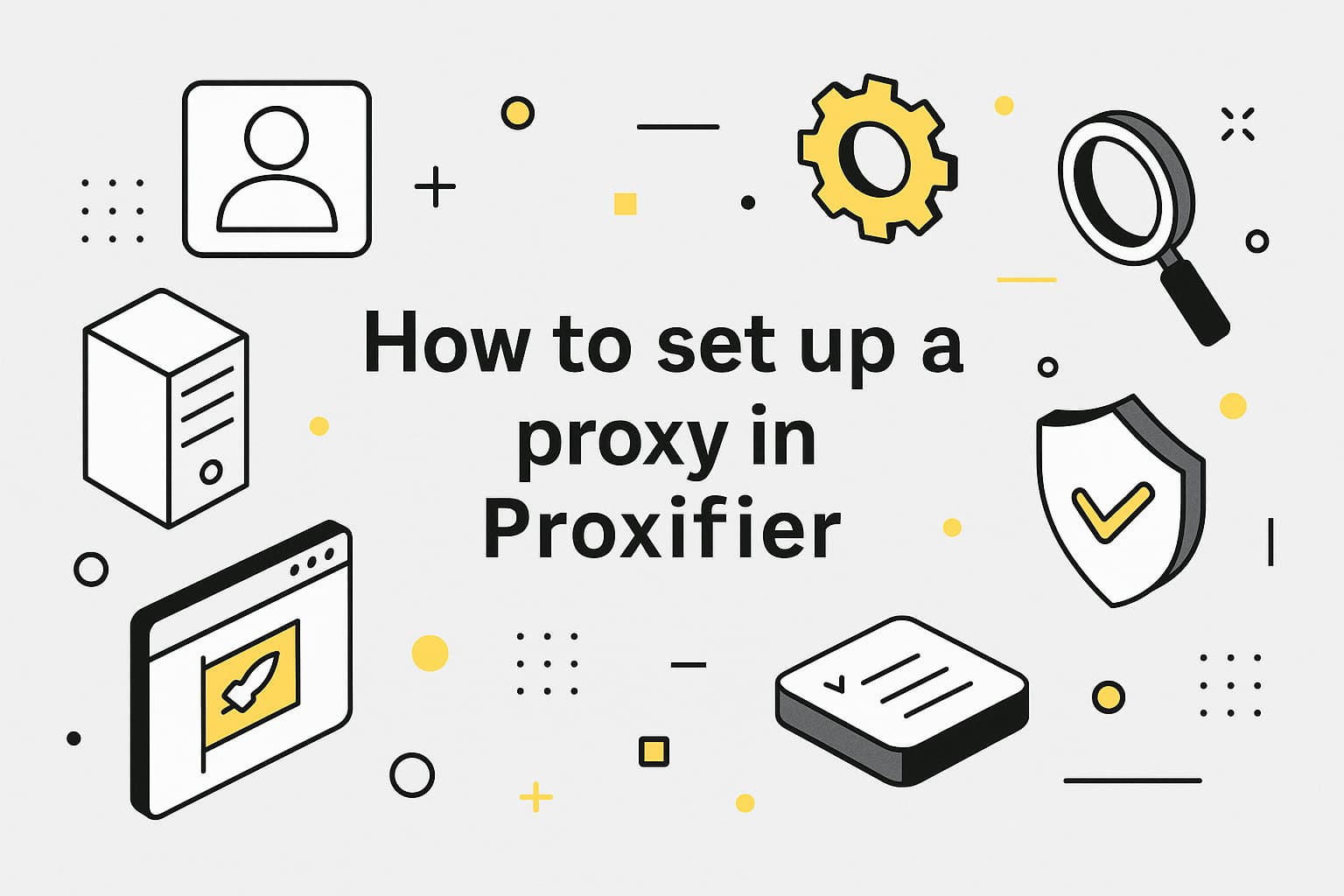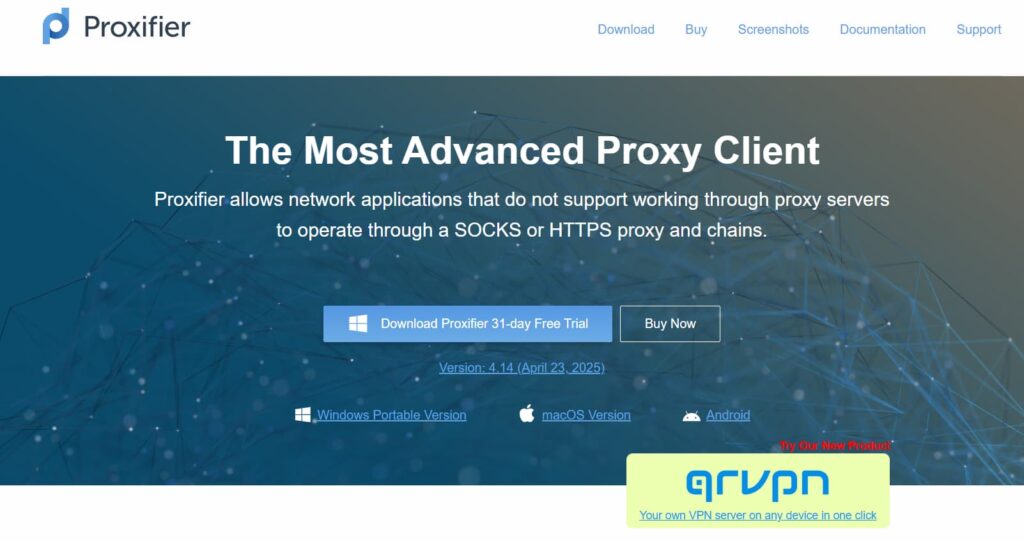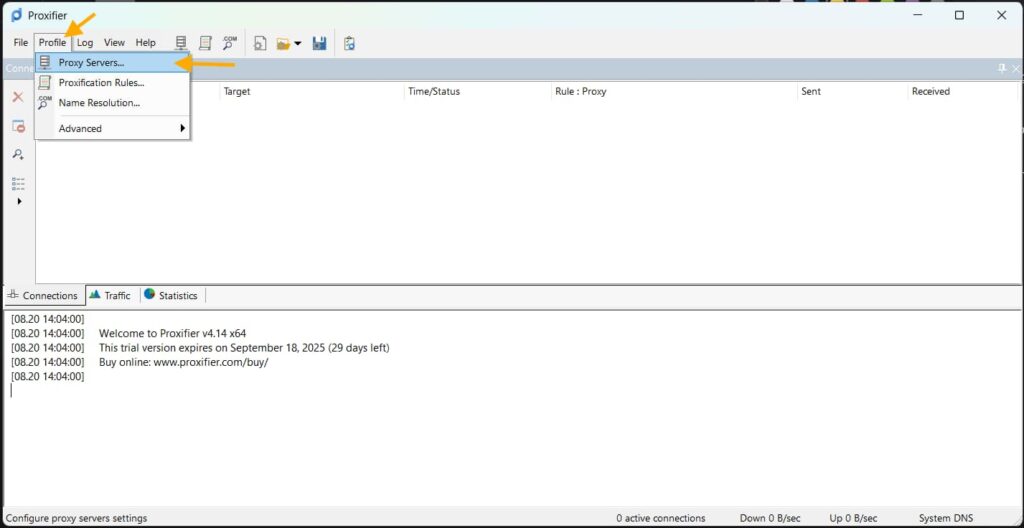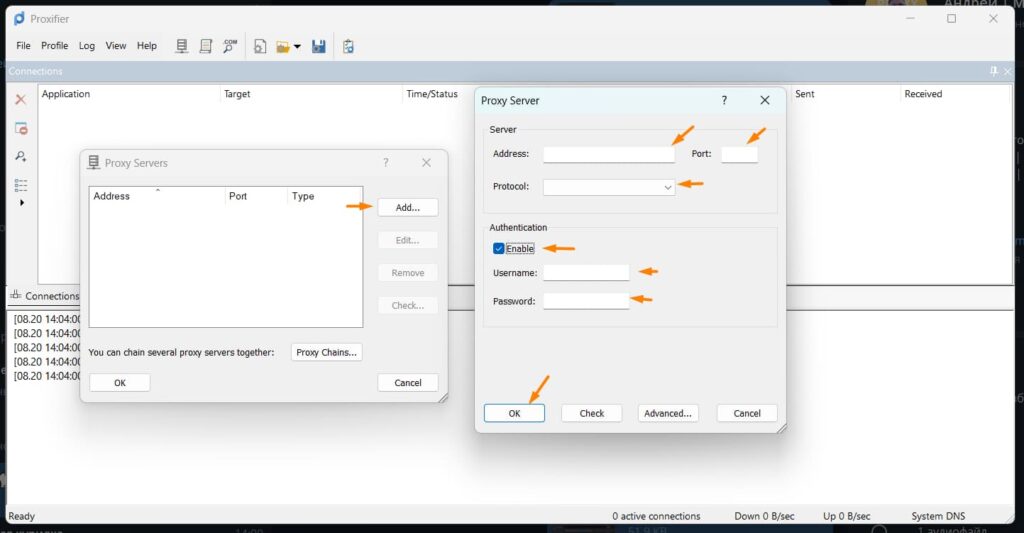How to set up a proxy server in Proxifier: a step-by-step guide

Proxifier enables secure internet use by hiding your IP address, accessing regional content while complying with site terms, and minimizing restrictions during data collection. This guide explains how to use Proxifier to set up proxies, route traffic, and troubleshoot issues. Clear steps help you master a Proxifier proxy setup for tasks like scraping data, testing apps, or managing social media accounts in just a few minutes.
Purpose and capabilities of Proxifier

What is Proxifier? It’s software that routes application traffic through a proxy server, even if the app lacks built-in proxy support. Proxifier helps conceal IP addresses, access region-restricted websites, and reduce limitations during data scraping. Below are its key tasks and use cases:
|
Task |
Description |
Use case |
|---|---|---|
|
Hiding IP address |
Routes traffic for anonymous operation in apps like browsers or account management tools. |
A marketer configures a Proxifier proxy using residential proxies from MangoProxy (90M+ IP pool) to check Instagram ads, mimicking a U.S. user and avoiding platform restrictions. |
|
Accessing regional content |
Enables access to websites restricted by region while adhering to their terms. |
An SEO specialist sets up Proxifier with SOCKS5 proxies to analyze Google search results in Germany, optimizing content for local markets. |
|
Data scraping |
Scrapes data from marketplaces or APIs with fewer restrictions, especially for frequent requests. |
An e-commerce store uses Proxifier with MangoProxy proxies to collect competitor prices on Amazon, adjusting pricing without triggering blocks. |
|
App testing |
Tests apps or games with traffic from different countries to identify access or localization issues. |
A developer routes game traffic through a proxy for Proxifier to test Asian servers, ensuring stable user access. |
These capabilities make a Proxifier setup versatile for apps like Chrome, Firefox, Scrapy, or AdsPower, ensuring anonymity and data access.
System requirements and Proxifier installation
Proxifier works on Windows (XP and later) and macOS (10.12 and later). Minimum requirements:
- Processor: 1 GHz.
- Memory: 512 MB.
- Free space: 10 MB.
To install:
- Download the file from proxifier.com.
- Follow the installer’s prompts.
- Launch Proxifier and enter a license key or activate the 31-day trial mode.
Setting up a proxy server in Proxifier

To configure a Proxifier proxy, follow these steps:
- In the main menu, select Profile → Proxy Servers.
- Click Add.
- Enter proxy details:
- Address (IP / Hostname) – Server IP or domain.
- Port – Proxy port.
- Protocol – Choose SOCKS5, SOCKS4, or HTTPS.
4. If authentication is required, check Enable authentication and input username/password.
5. Click Check to verify the connection.
Choosing a proxy type (SOCKS, HTTPS, HTTP)

- SOCKS5: Versatile for browsers and games. MangoProxy offers SOCKS5 with ~600–700ms latency, ideal for most tasks. Learn more in What types of proxy servers exist.
- HTTPS: Used for encrypted web traffic.
- HTTP: Suitable for basic tasks but less secure.
Configuring IP address and port
Enter the proxy address and port provided by your provider. Verify accuracy to prevent errors.
Authentication: username and password
If needed, enter username/password or set up an IP whitelist through your provider.
Verifying connection and functionality
Click Check in Proxifier. Then, open a browser and visit whatismyipaddress.com to confirm the proxy’s IP matches.
Proxy routing rules in Proxifier
To route specific app traffic through a proxy, configure rules:
- Go to Profile → Proxification Rules.
- Click Add.
- Specify:
- Rule name (e.g., Chrome Proxy).
- App or port to apply the proxy to.
- Selected proxy server.
4. Save changes.
Applying proxies to specific apps
Select an app (e.g., chrome.exe for Google Chrome) or port (e.g., 80 for HTTP traffic). This suits scraping with Scrapy or account management in AdsPower.
Setting exceptions
Add exceptions like localhost or 127.0.0.1 to bypass the proxy for specific traffic. This is useful for local apps.
Rule priorities and order
Rearrange rules in Proxifier’s list to set priority. For example, place the Chrome rule above the “Default” rule.
Testing Proxifier functionality
After setup, verify Proxifier’s performance:
Checking IP address with online services
Launch an app configured in Proxifier and visit whatismyipaddress.com. The displayed IP should match the proxy, not your real IP.
Using traceroute for diagnostics
Run tracert (Windows) or traceroute (macOS) in the terminal. If traffic routes through the proxy server, the setup is correct.
Common issues and solutions
If Proxifier could not connect through proxy, consider these issues:
Proxy connection error
- Verify the proxy address, port, and protocol. Ensure the proxy is active in your provider’s dashboard (e.g., MangoProxy).
- Use a proxy with ~600–700ms latency, especially for frequent requests.
Incorrect authentication details
Check username/password or set up an IP whitelist through your provider.
DNS resolution issues
Enable “Resolve hostnames through proxy” in Profile → Name Resolution in Proxifier. This routes DNS requests through the proxy, preventing IP leaks.
Conflicts with antivirus or firewall
Antivirus or firewall software may restrict Proxifier. Add the program to antivirus exceptions or temporarily disable the firewall to test.
- Answers to common questions about Proxifier setup are provided below.

Frequently asked questions
Here we answered the most frequently asked questions.
Where to buy proxies for Proxifier?
Choose fast and secure proxies from MangoProxy, offering a 90M+ IP pool, HTTP/HTTPS/SOCKS5 support, and pricing from $0.6/GB for reliable performance.
Can Proxifier handle multiple proxy types simultaneously?
Proxifier supports adding multiple proxies (SOCKS5, HTTPS, HTTP) and configuring rules to use them across different apps.
Does Proxifier work on macOS or only Windows?
Proxifier runs on Windows (XP and later) and macOS (10.12 and later) with identical features.
Does Proxifier work with browsers and games lacking built-in proxy support?
Proxifier routes traffic from any app, including Chrome, Firefox, or games, through a proxy, even without native support.

Leave Comment